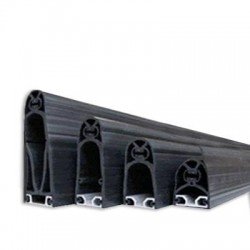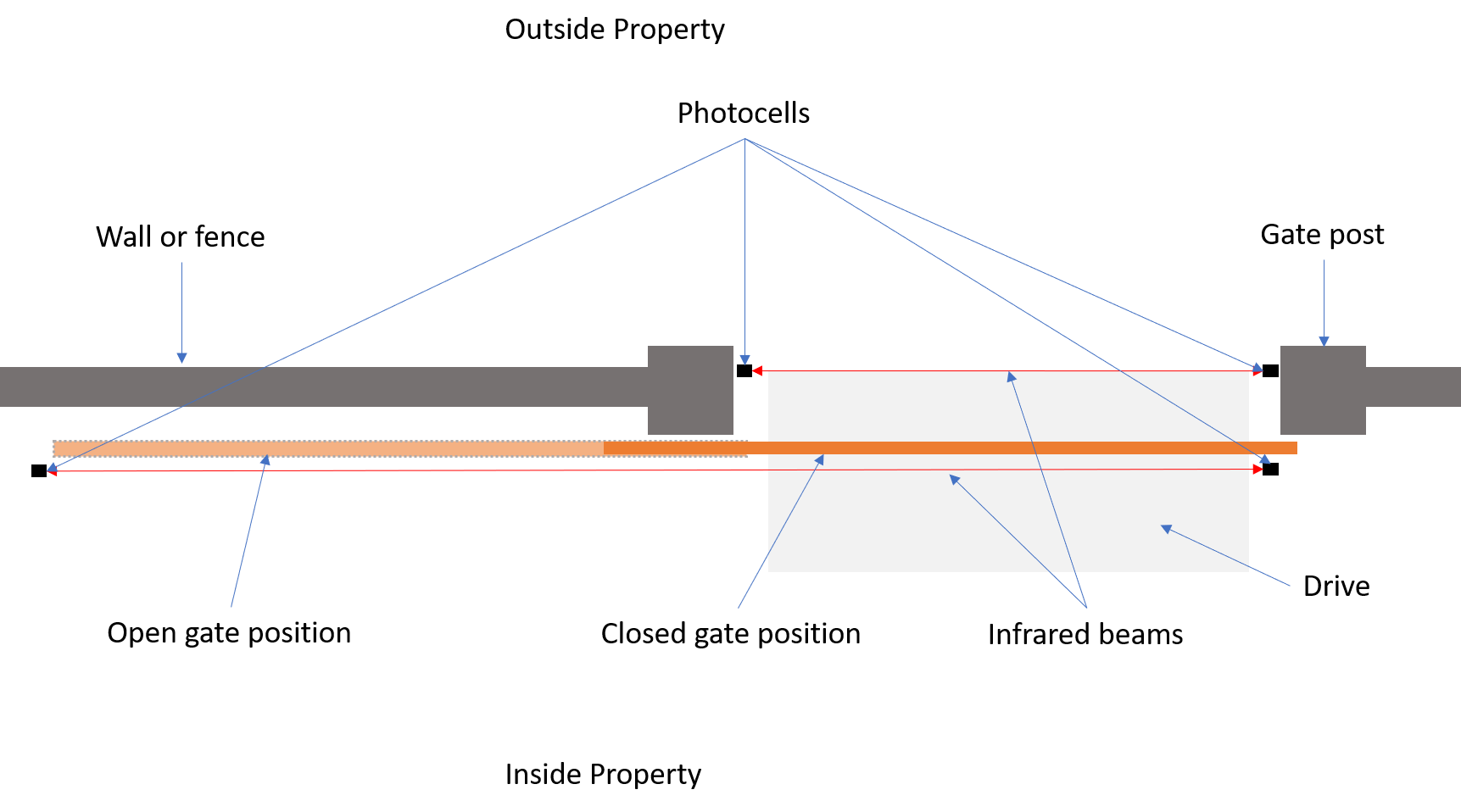-
Your shopping cart is empty!
Menu
Manually operated gates are pushed open and closed by their owner when needed. But automatic gates are driven by powerful motors that normally only stop when the gate is fully open or closed. So, what safety features exist to prevent serious injury or expensive damage if moving electric gates hit someone or something?
One way to address this issue is to use a gate automation system that features obstacle detection.
All gate automation systems use gate motors that are controlled by a control panel. In all 24V and some 230V systems, this control panel features obstacle detection software.
During gate operation, the control panel monitors motor power consumption and information from encoders (if fitted). Encoders are made up of a magnet mounted on the motor, and a pick-up board that sits next to the motor. As the motor spins, the magnet passes the pick-up which records each pass. The control panel learns how many turns of the motor are in a complete gate opening or closing manoeuvre. This allows it to give a numerical value to all positions the gate can be in. The control panel now knows where a gate is in its run cycle, and if the gate is moving at the expected speed.
Based on the power consumption and any information from encoders, a control panel can tell if a gate is moving as expected or if an obstacle is affecting its movement.
Motors have three stages of their run cycles - start, run, and slow-down. In the run phase, obstacle detection software will stop the gate and reverse its direction for a couple of inches. In the start and slow-down phases, the gate will be stopped but not reverse.

If no other safety feature stops the gates beforehand, obstacle detection will stop gates if they hit an obstacle strong enough to slow them. This could be a person, vehicle or even very strong wind acting on the faces of close-boarded gates. If the obstruction is encountered while the gate is in its run phase, it will also reverse a couple of inches. If it is nearly closed and slowing down, or it has just started moving and is not at full speed, it will only stop.
The level of resistance required to cause the obstacle detection to stop a gate moving can be varied. This is a different adjustment from the level of force the gate motors apply to move gates which can also be changed.
Obstacle detection works when the gates hit something, so this type of gate safety is the last line of defence.
Obstacle detection will back the gates away after hitting something in their run phase. However, if a gate trapped someone at its ends of travel, the gate will stop but not reverse so the person can remain trapped. This is particularly important where swing gate motors move gates from close to the hinge (such as undergrounds), as the force applied to the gate by the motor is significantly more than that applied by a motor that mounts on the gate further from the hinge. This is caused by the principle of leverage.
Similarly, anyone trapped closer to the hinge point of swing gates has to push much harder on the gates to move them than someone who can push the gates at their opening edge away from the hinge.
What additional gate automation safety features should be included as well as obstacle detection?
Gate safety should be applied to gate automation systems in the following order:
For more information on vehicle detection, read our blog here.
Safety edges use the same principle as obstacle detection in that they have to come into contact with an obstacle to cause the gates to stop and back off. Their construction, however, means that any impact is significantly reduced, and they can be positioned very carefully to cover specific danger area.
Safety edges are made up of a rubber profile that is mounted along an aluminium channel which itself is attached to a gate, or solid objects that gate moves close to such as a gate post or wall edge. However, some small ones are self-adhesive and do not need an aluminium channel. Inside the rubber profile is a conductive contact strip. As the rubber profile is compressed when it hits something, the circuit is completed, and a signal is sent back to the control panel.
Safety edge installation and use can be illustrated where one is mounted along the vertical leading edge of a sliding gate. If

someone or something were in the driveway between gate pillars as the sliding gate slid closed, the safety edge would hit them first and cause the gate to stop and reverse.
As the point of impact is a compressible rubber edge, safety edges are less likely to cause impact injuries than obstacle detection. If obstacle detection reverses a gate after it has hit a car, there is likely to be some damage. If a safety edge hits the same car, the rubber profile may prevent any damage at all.
Safety edges require an interface and can be used on their own or to embellish existing obstacle detection.
Photocells are electronic safety devices that are used in pairs. One emits an invisible beam of infra-red light which is either detected by the other or reflected back to the first. If an object breaks the beam, the photocells trigger the control panel to stop and reverse the gates.
Positioning pairs of photocells across danger areas ensures that anyone entering while gates are moving interrupts the beam and stops the gates.

For more information on the use of photocells, read our blog here.
LinkCare offer a variety of products that provide the best in automatic gate kits, gate remotes and other accessories. We are also able to recommend trusted companies for gate installation and maintenance across the UK. Contact us on 01895 232626 or visit our website for more information.
Leave a Comment